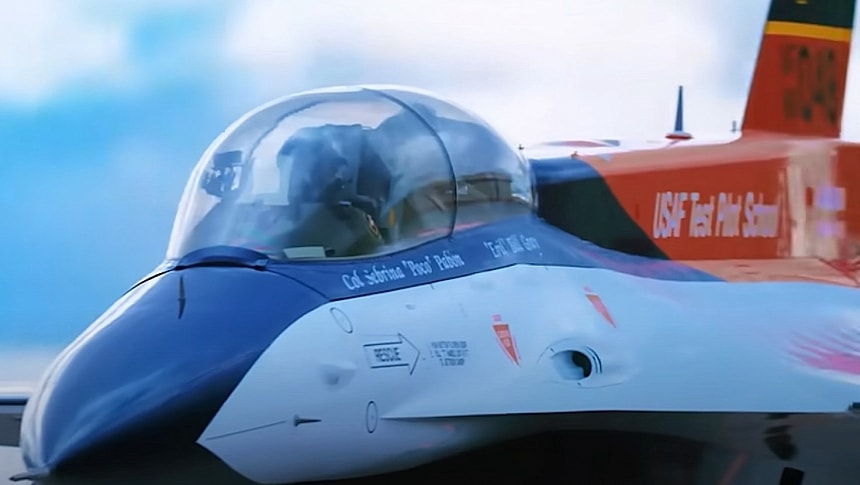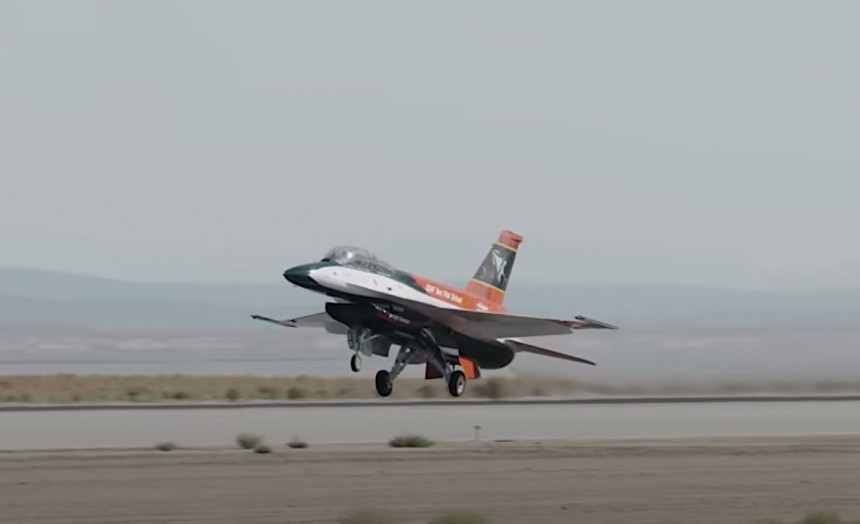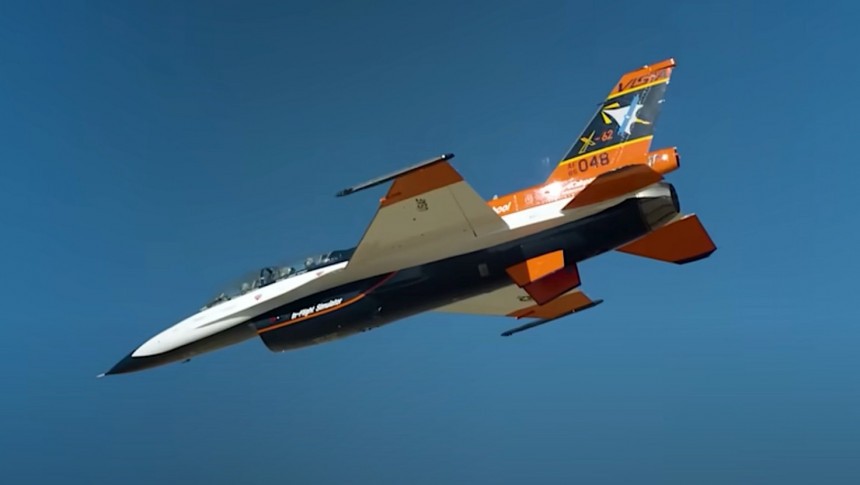As a species, we are at a point in our existence when the technology we create has the ability to surpass us humans in many of the tasks we perform on a daily basis. And although that's a desirable development in most areas, trusting tech such as AI with control over weapon systems is something most humans are very skittish about.
Blame it on the Terminator movies or on whatever you like, but many of us have to admit that every time we hear about AI doing something it was not capable of doing before our heart rate accelerates a bit. Especially when that something has to do with a computer mind flying a fighter jet in a real-world dogfight against a human opponent.
I'm not sure how many of you know this, but the Defense Advanced Research Projects Agency (DARPA) has been running for several years now a program meant to teach artificial intelligence how to beat human pilots in aerial combat.
The program is called Air Combat Evolution (ACE), and even if it sounds like the title of some video game, it's really not. That's because the ultimate goal of the program is to give humans another tool to complete their missions.
How so? It's simple, really. If the AI knows what to do in dogfight situations and the human flying with it trusts it enough, then the computer brain can take care of the minor fighting, while the human one can stay focused on the larger air battle.
For instance, while the AI is engaged in eliminating targets within-visual-range dogfights, the pilot can focus on remotely flying a swarm of drones that are operating in the area.
Ever since it announced the program in 2019 DARPA has been at it testing the algorithms of the AI, but last year it actually moved to real-world tests using the system it has been working on and a specially modified F-16 fighter jet called Variable In-flight Simulator Test Aircraft (VISTA or X-62A).
The plane is an offshoot of the F-16D and is the work of General Dynamics and Calspan. It is a plane regularly used by the Air Force Test Pilot School, thus it can accommodate two pilots. Its General Electric jet engine gives it 28,600 pounds of thrust with the afterburner running hot and a top speed of Mach 1.2 (915 mph/1,460 kph).
It is this VISTA plane that DARPA used to test the AI. Although the specifics of the system used during the flight were not disclosed, it's important to note that the computer was not alone inside the aircraft in flight. A human pilot was onboard, ready to take over if anything went wrong.
The AI's opponent in the within-visual-range combat scenarios being conducted was another fighter plane, this one controlled exclusively by human hands and brain.
DARPA doesn't specifically say when this series of "first-ever in-air tests of AI algorithms autonomously flying a fighter jet against a human-piloted fighter jet" took place, but the video it released last week was shot back in 2023. We know the flights occurred in the skies over the Edwards Air Force Base in California, but its outcome remains under wraps.
The clip below, although it mostly shows ACE team members having their say on why the DARPA program is "unlike other aerospace autonomy projects and how it represents a transformational moment in aerospace history," does show brief instances of the dogfights, marking the first time such images have been made public.
The biggest challenge DARPA seems to be facing with this is not the tech itself, but getting the pilots to trust the AI in their planes to save their lives. This is a crucial aspect of the ACE program, one that for now keeps the scope of the AI pilot within set boundaries.
As per Air Force Lt. Col. Dan Javorsek, "only after human pilots are confident that the AI algorithms are trustworthy in handling bounded, transparent and predictable behaviors will the aerial engagement scenarios increase in difficulty and realism."
What that means is that for now, at least, the tests still to be conducted this year won't be prohibitively complex. Yet we might see the AI get involved in more challenging scenarios, as this is the only way it can evolve.
To date the AI has been flown 21 times, during which time Air Force programmers modified no less than 100,000 lines of code. And that's understandable, considering how dogfight training is perhaps just as dangerous as aerial battles themselves.
As per USAF statistics, from 2000 to 2019 no less than 32 aircraft were destroyed and 23 damaged during dogfight training flights. There have been no less than 27 mid-air collisions and 12 Air Force people lost their lives.
Ideally, the arrival of the AI will change all that, provided, of course, human beings learn how to confidently put their lives in the hands of a computer program during the most challenging missions a military aviator ever has to face.
I'm not sure how many of you know this, but the Defense Advanced Research Projects Agency (DARPA) has been running for several years now a program meant to teach artificial intelligence how to beat human pilots in aerial combat.
The program is called Air Combat Evolution (ACE), and even if it sounds like the title of some video game, it's really not. That's because the ultimate goal of the program is to give humans another tool to complete their missions.
How so? It's simple, really. If the AI knows what to do in dogfight situations and the human flying with it trusts it enough, then the computer brain can take care of the minor fighting, while the human one can stay focused on the larger air battle.
For instance, while the AI is engaged in eliminating targets within-visual-range dogfights, the pilot can focus on remotely flying a swarm of drones that are operating in the area.
Ever since it announced the program in 2019 DARPA has been at it testing the algorithms of the AI, but last year it actually moved to real-world tests using the system it has been working on and a specially modified F-16 fighter jet called Variable In-flight Simulator Test Aircraft (VISTA or X-62A).
It is this VISTA plane that DARPA used to test the AI. Although the specifics of the system used during the flight were not disclosed, it's important to note that the computer was not alone inside the aircraft in flight. A human pilot was onboard, ready to take over if anything went wrong.
The AI's opponent in the within-visual-range combat scenarios being conducted was another fighter plane, this one controlled exclusively by human hands and brain.
DARPA doesn't specifically say when this series of "first-ever in-air tests of AI algorithms autonomously flying a fighter jet against a human-piloted fighter jet" took place, but the video it released last week was shot back in 2023. We know the flights occurred in the skies over the Edwards Air Force Base in California, but its outcome remains under wraps.
The clip below, although it mostly shows ACE team members having their say on why the DARPA program is "unlike other aerospace autonomy projects and how it represents a transformational moment in aerospace history," does show brief instances of the dogfights, marking the first time such images have been made public.
The biggest challenge DARPA seems to be facing with this is not the tech itself, but getting the pilots to trust the AI in their planes to save their lives. This is a crucial aspect of the ACE program, one that for now keeps the scope of the AI pilot within set boundaries.
What that means is that for now, at least, the tests still to be conducted this year won't be prohibitively complex. Yet we might see the AI get involved in more challenging scenarios, as this is the only way it can evolve.
To date the AI has been flown 21 times, during which time Air Force programmers modified no less than 100,000 lines of code. And that's understandable, considering how dogfight training is perhaps just as dangerous as aerial battles themselves.
As per USAF statistics, from 2000 to 2019 no less than 32 aircraft were destroyed and 23 damaged during dogfight training flights. There have been no less than 27 mid-air collisions and 12 Air Force people lost their lives.
Ideally, the arrival of the AI will change all that, provided, of course, human beings learn how to confidently put their lives in the hands of a computer program during the most challenging missions a military aviator ever has to face.
















